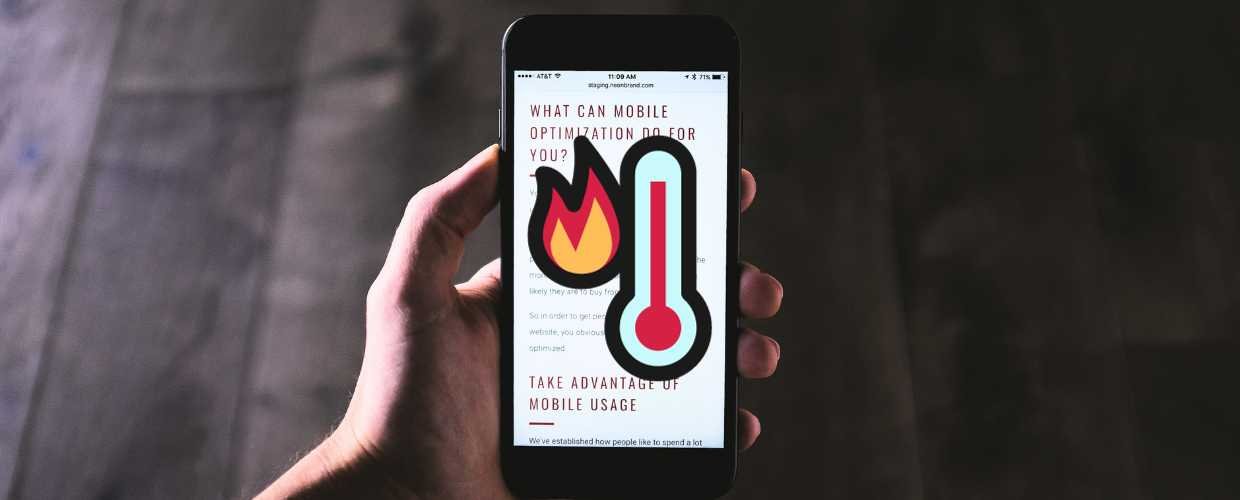Mobile devices have become indispensable tools in our daily lives, serving purposes beyond mere communication. However, one common issue that mobile users often encounter is overheating. Overheating mobile devices can be uncomfortable, negatively impact performance, and potentially lead to long-term damage.
Guide to Fix Mobile Device Overheating Issues
In this comprehensive step-by-step guide, we will delve into the identification, prevention, and resolution of mobile device overheating issues, allowing you to maintain your device’s optimal functionality.
Identify the Symptoms
Recognizing the symptoms of mobile device overheating is the initial and crucial step. These symptoms include the device becoming excessively hot to the touch, a noticeable drain in battery life, and a decreased performance, such as applications running slowly or crashing. Sometimes, your device may display temperature warnings or even shut down automatically to protect itself from damage. Identifying these signs is essential for addressing the issue effectively.
Give Your Device a Break
When you observe that your mobile device is overheated, it’s imperative to halt its usage immediately. Close any active applications, exit resource-intensive games, and cease activities that heavily demand your device’s CPU or GPU. Cooling your device prevents further overheating and potentially harming internal components.
Remove the Device from Direct Sunlight
Direct exposure to sunlight can quickly elevate your device’s temperature. If you use your mobile device outdoors, ensure you find a shaded area or use a cover to shield it from direct sunlight. High temperatures, combined with prolonged exposure, can exacerbate overheating issues.
Check for Case or Cover Interference
While protective cases and covers are essential for safeguarding your device, they can sometimes impede its ability to dissipate heat effectively. If your device is overheating, consider temporarily removing any case or cover to facilitate better airflow and cooling. This simple action can make a notable difference in heat dissipation.
Close Background Apps
Background applications can continue to consume valuable CPU and GPU resources, contributing to overheating. Access your device’s multitasking view and close any unnecessary background apps running. On some devices, you can access a task manager to force-close applications that are not essential.
Disable Unused Connectivity Features
Features such as Bluetooth, Wi-Fi, and GPS, when left active, can also contribute to overheating, especially when not in use. Disable these features when they are not actively needed. Additionally, consider enabling airplane mode when you don’t require any connectivity, as it conserves battery and minimizes heat generation.
Reduce Screen Brightness
Display is a significant contributor to heat generation on mobile devices. Lower the screen brightness to a comfortable level for your current environment. Additionally, reduce the screen timeout duration to ensure the display turns off promptly when not in use. These adjustments can help significantly minimize heat generation.
Check for Software Updates
Manufacturers frequently release software updates that include bug fixes and performance enhancements. Ensure that your device’s operating system and installed applications are current. Updates often address software-related issues that may contribute to overheating, so staying current is essential.
Monitor Rogue Apps
Certain apps may misbehave and consume excessive system resources, leading to overheating. Review your device’s battery usage statistics to identify apps that consume disproportionate power. Uninstall or update these apps as necessary to prevent them from causing overheating issues.
Clear Cache Data
App cache data accumulated over time can sometimes lead to performance issues and overheating. Access your device’s settings and navigate to the storage or cache management section. Here, you can clear cache data for specific apps, which can help alleviate storage-related problems.
Check for Malware and Viruses
Malware and viruses can operate in the background, consuming resources and generating heat. Employ a reputable antivirus or anti-malware solution to scan your device for security threats. If malware or viruses are detected, promptly remove them to prevent further overheating.
Avoid Resource-Intensive Activities
Resource-intensive activities such as gaming, video streaming, and using augmented reality apps can quickly elevate your device’s temperature. Limit engagement in these activities to prevent further overheating, especially when your device is warm. Practicing moderation in these activities can help maintain your device’s temperature within acceptable ranges.
Keep Your Device Clean
Dust and debris can accumulate in your device’s ports, speakers, and cooling vents, obstructing airflow and causing overheating. Regularly clean your device with a soft, dry cloth or use compressed air to remove any obstructions. By maintaining a clean device, you can ensure that heat dissipation remains efficient.
Factory Reset (Last Resort)
If all other attempts to address overheating fail, a factory reset may be considered a last resort. However, before proceeding, ensure that all essential data is backed up to prevent data loss. It’s crucial to understand that a factory reset erases all data and settings, returning your device to its original state. This step should only be taken when no other solution proves effective.
Conclusion
Overheating mobile devices can be frustrating and potentially harmful, but with these step-by-step guidelines, you can diagnose and resolve the problem effectively. By taking proactive measures to prevent overheating and employing troubleshooting techniques when needed, you can ensure that your mobile device operates optimally without encountering temperature-related setbacks. Remember that regular maintenance and prudent usage habits can go a long way in preventing overheating issues in the first place.










